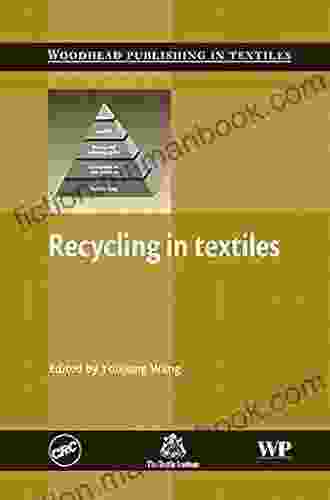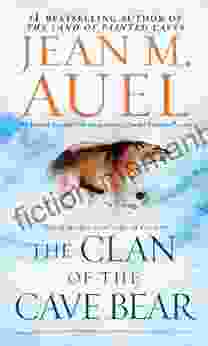Recycling in Textiles: A Comprehensive Guide to Sustainable Practices and Innovations in the Textile Industry

The textile industry is a major contributor to environmental pollution, with the production, consumption, and disposal of textiles generating significant amounts of waste and greenhouse gases. Recycling plays a crucial role in mitigating the environmental impact of the industry by reducing waste and conserving resources. This article explores the importance of recycling in textiles, highlighting the environmental benefits, challenges, and innovative techniques used by Woodhead Publishing in Textiles to promote sustainable practices in the industry.
4.6 out of 5
| Language | : | English |
| File size | : | 10307 KB |
| Text-to-Speech | : | Enabled |
| Screen Reader | : | Supported |
| Enhanced typesetting | : | Enabled |
| Print length | : | 241 pages |
The Importance of Textile Recycling
Recycling textiles offers numerous environmental benefits, including:
- Reduced landfill waste: Textiles constitute a significant portion of landfill waste, contributing to environmental pollution and methane emissions. Recycling textiles diverts them from landfills, conserving valuable space and reducing waste.
- Conservation of resources: Textile production requires significant amounts of raw materials, including cotton, wool, and synthetic fibers. Recycling textiles reduces the demand for virgin materials, conserving natural resources and minimizing environmental degradation.
- Reduced energy consumption: Producing textiles from recycled materials consumes less energy compared to using virgin materials. This energy savings contributes to reducing greenhouse gas emissions and mitigating climate change.
- Lower carbon footprint: The entire life cycle of textiles, from production to disposal, generates carbon emissions. Recycling textiles reduces the carbon footprint of the industry by avoiding the energy-intensive processes associated with producing new textiles.
Challenges in Textile Recycling
Despite the environmental benefits, textile recycling faces several challenges, including:
- Fabric composition: Different textile fibers have varying recycling capabilities. Some fibers, such as cotton and linen, are easier to recycle than synthetic fibers like polyester and nylon.
- Contamination: Textiles often contain non-recyclable materials, such as zippers, buttons, and embellishments. These contaminants can hinder the recycling process and reduce the quality of recycled fibers.
- Colorfastness: Dyes used in textiles can affect the recyclability of fabrics. Some dyes may fade or bleed during the recycling process, compromising the quality of recycled fibers.
- Lack of infrastructure: In many regions, the infrastructure for textile recycling is underdeveloped or nonexistent, limiting the ability to collect and process used textiles effectively.
Innovative Techniques by Woodhead Publishing in Textiles
Woodhead Publishing in Textiles is a leading publisher of technical information for the textile industry. The company has been actively promoting sustainable practices in the industry through its publications, conferences, and research initiatives. Here are some innovative techniques highlighted by Woodhead Publishing in Textiles for improving textile recycling:
- Mechanical recycling: This technique involves mechanically breaking down used textiles into fibers that can be reused in new products. Mechanical recycling is widely used for cotton and other natural fibers.
- Chemical recycling: This process uses chemicals to dissolve and regenerate textile fibers. Chemical recycling is particularly suitable for synthetic fibers that are difficult to recycle mechanically.
- Fiber-to-fiber recycling: This innovative technique involves converting used textiles back into new fibers without the need for chemical or mechanical processing. Fiber-to-fiber recycling preserves the original properties of the fibers, resulting in high-quality recycled textiles.
- Biodegradable textiles: Woodhead Publishing in Textiles promotes the use of biodegradable textiles that can decompose naturally at the end of their life cycle, reducing the environmental impact of textile waste.
The Circular Economy in Textiles
The circular economy is a model that emphasizes the reuse and recycling of materials to minimize waste and promote sustainability. In the context of textiles, the circular economy aims to reduce the consumption of virgin resources, extend the lifespan of textiles, and maximize the use of recycled materials. Woodhead Publishing in Textiles advocates for the adoption of circular economy principles in the textile industry to create a more sustainable and environmentally friendly industry.
Recycling plays a crucial role in promoting sustainability in the textile industry. By reducing waste, conserving resources, and reducing carbon emissions, textile recycling contributes to environmental protection. Woodhead Publishing in Textiles continues to be a leader in promoting sustainable practices in the industry, highlighting innovative techniques, supporting research, and advocating for the adoption of circular economy principles. By embracing recycling and other sustainable initiatives, the textile industry can reduce its environmental impact and contribute to a more sustainable future.
4.6 out of 5
| Language | : | English |
| File size | : | 10307 KB |
| Text-to-Speech | : | Enabled |
| Screen Reader | : | Supported |
| Enhanced typesetting | : | Enabled |
| Print length | : | 241 pages |
Do you want to contribute by writing guest posts on this blog?
Please contact us and send us a resume of previous articles that you have written.
 Top Book
Top Book Novel
Novel Fiction
Fiction Nonfiction
Nonfiction Literature
Literature Paperback
Paperback Hardcover
Hardcover E-book
E-book Audiobook
Audiobook Bestseller
Bestseller Classic
Classic Mystery
Mystery Thriller
Thriller Romance
Romance Fantasy
Fantasy Science Fiction
Science Fiction Biography
Biography Memoir
Memoir Autobiography
Autobiography Poetry
Poetry Drama
Drama Historical Fiction
Historical Fiction Self-help
Self-help Young Adult
Young Adult Childrens Books
Childrens Books Graphic Novel
Graphic Novel Anthology
Anthology Series
Series Encyclopedia
Encyclopedia Reference
Reference Guidebook
Guidebook Textbook
Textbook Workbook
Workbook Journal
Journal Diary
Diary Manuscript
Manuscript Folio
Folio Pulp Fiction
Pulp Fiction Short Stories
Short Stories Fairy Tales
Fairy Tales Fables
Fables Mythology
Mythology Philosophy
Philosophy Religion
Religion Spirituality
Spirituality Essays
Essays Critique
Critique Commentary
Commentary Glossary
Glossary Bibliography
Bibliography Index
Index Table of Contents
Table of Contents Preface
Preface Introduction
Introduction Foreword
Foreword Afterword
Afterword Appendices
Appendices Annotations
Annotations Footnotes
Footnotes Epilogue
Epilogue Prologue
Prologue Camilla Townsend
Camilla Townsend Scott Schell
Scott Schell Claire Kart
Claire Kart Caleb Howard Courtney
Caleb Howard Courtney Jenny Rowbory
Jenny Rowbory St Teresa Of Avila
St Teresa Of Avila Diane Von Furstenberg
Diane Von Furstenberg Carmen Desousa
Carmen Desousa Elaine N Aron
Elaine N Aron Ed Rosenthal
Ed Rosenthal Pippa Dacosta
Pippa Dacosta Lee Storm
Lee Storm Kathryn Le Veque
Kathryn Le Veque Lee Vaughan
Lee Vaughan David G Lanoue
David G Lanoue Kimberly Carrillo
Kimberly Carrillo Henry David Thoreau
Henry David Thoreau Kathryn H Jacobsen
Kathryn H Jacobsen Edd Voss
Edd Voss Hugh Morrison
Hugh Morrison
Light bulbAdvertise smarter! Our strategic ad space ensures maximum exposure. Reserve your spot today!

 Russell MitchellEverybody Vaguely Familiar Kuei Shien Lee: Exploring the Life and Career of a...
Russell MitchellEverybody Vaguely Familiar Kuei Shien Lee: Exploring the Life and Career of a... Gustavo CoxFollow ·12.5k
Gustavo CoxFollow ·12.5k Curtis StewartFollow ·3.1k
Curtis StewartFollow ·3.1k Ralph TurnerFollow ·17.8k
Ralph TurnerFollow ·17.8k Isaac AsimovFollow ·2.2k
Isaac AsimovFollow ·2.2k Deacon BellFollow ·4.4k
Deacon BellFollow ·4.4k E.M. ForsterFollow ·13.6k
E.M. ForsterFollow ·13.6k Diego BlairFollow ·8.2k
Diego BlairFollow ·8.2k Richard WrightFollow ·13.7k
Richard WrightFollow ·13.7k
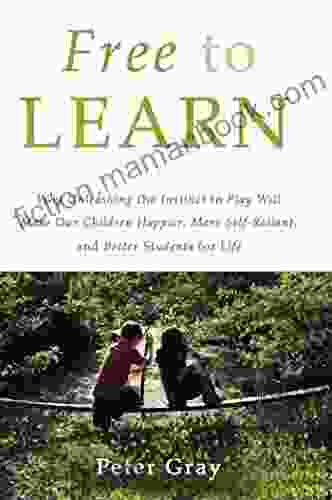
 Abe Mitchell
Abe MitchellWhy Unleashing the Instinct to Play Will Make Our...
Play is an essential part of childhood. It is...
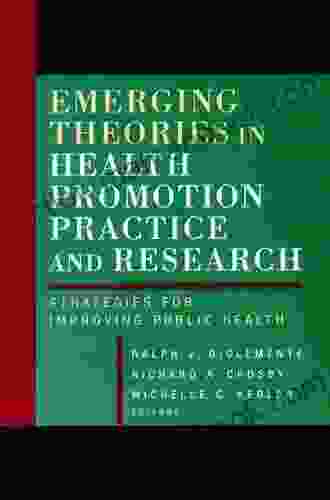
 Rubén Darío
Rubén DaríoTheory in Health Promotion Research and Practice
Theory is essential...
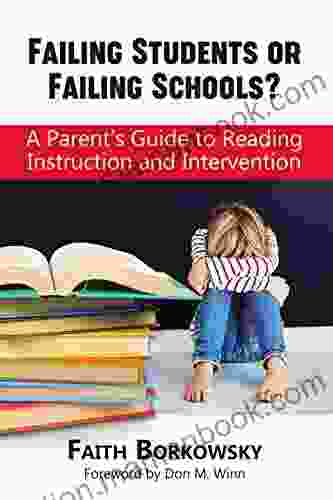
 Howard Blair
Howard BlairFailing Students or Failing Schools: Uncovering the Root...
In the United States, the issue of failing...
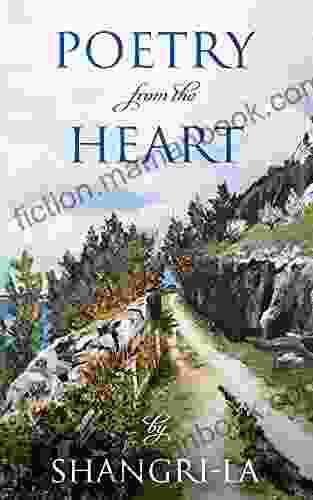
 Ira Cox
Ira CoxPoetry From the Heart Chope: A Symphony of Soul and Verse
Embark on a literary...

 Easton Powell
Easton PowellThe Witch Hunt: Wicked Witches of Shadow Woods
In the cursed woods of...
4.6 out of 5
| Language | : | English |
| File size | : | 10307 KB |
| Text-to-Speech | : | Enabled |
| Screen Reader | : | Supported |
| Enhanced typesetting | : | Enabled |
| Print length | : | 241 pages |


